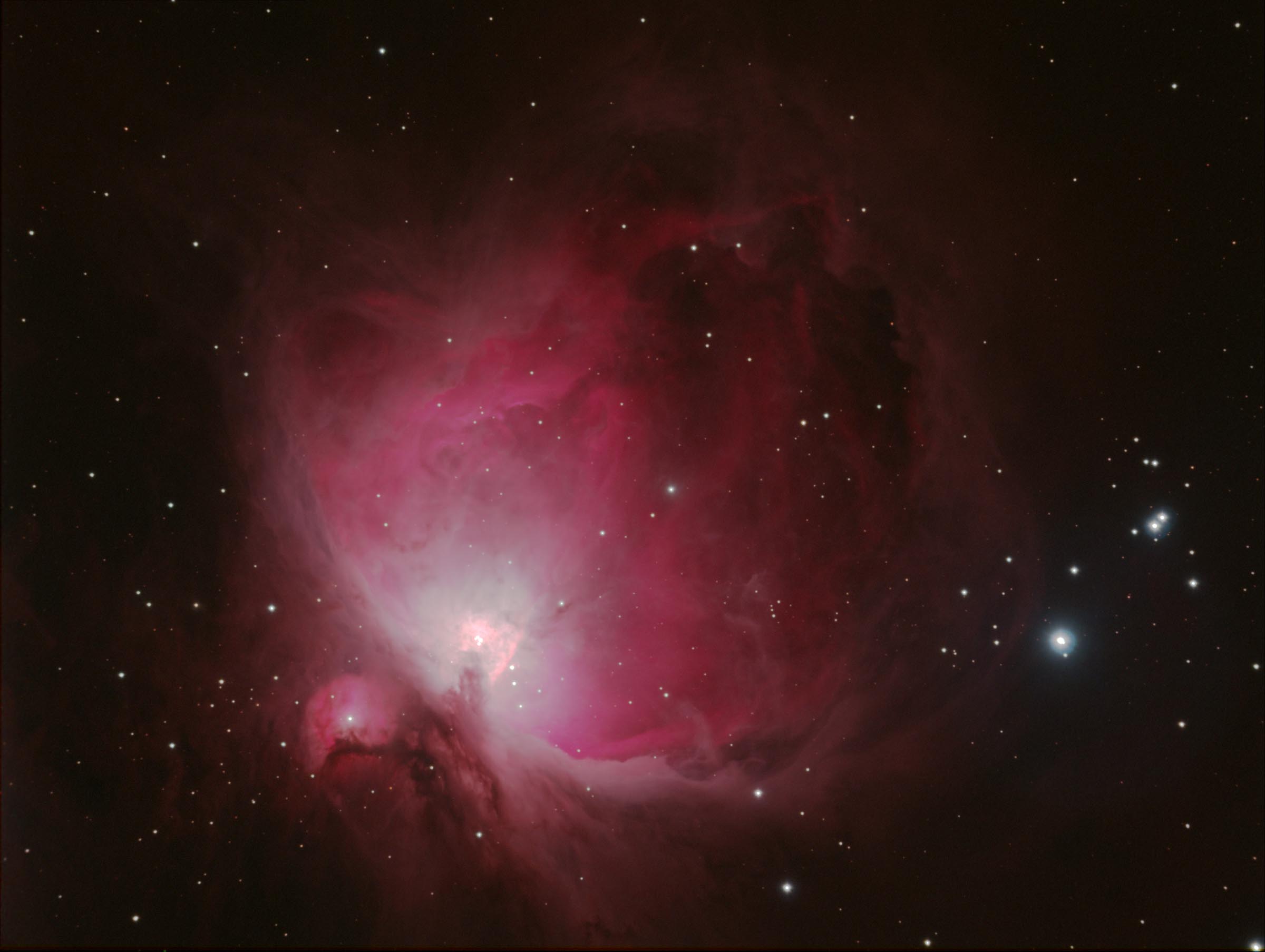
Astronomical Image Processing
 | Sentinel of the Caprock Observatory Astronomical Image Processing |
Astrophotography (or perhaps in our digital age more correctly termed "astro-imaging") is a very interesting and satisfying passtime that many amateur astronomers indulge in, particularly now that good digital imaging equipment has become available and affordable for many. There are many websites with impressive displays of astronomical images, and each tends to reflect the philosophy of the astronomer with regard to what good astro-images should look like. Some go for scientific content, some for artistic expression, and some for a synthesis of the two. The choice will largely define how the individual processes the raw imagery produced by their imaging system to produce the final image product. Most deep-sky objects that we can observe visually through a telescope don't exhibit much in the way of color. This doesn't mean that deep sky objects don't have color— it's just that we generally can't see it. Of the two sets of visual receptors that we have in our eyes, the one responsible for color vision is not sensitive enough to respond to the low photon fluxes that we receive from deep-sky objects. The objective of astro-imaging at SOCO is to investigate what these astronomical objects would look like if our color vision were sensitive enough to adequately respond to them. In other words, the objective is to show the "true" color of astronomical objects. While in many cases we have an idea of what the "true" color of an object should be, based on its chemical composition and the atomic processes occurring in it, producing an image that exhibits this color is not neccessarily a straight-forward task. This is because we normally do not image the complete spectrum of light from the object in sufficient detail to reconstruct the correct mixture of wavelengths that would give rise to the "true" color of the object. Rather, we image in broad spectral bands (Red, Green, Blue) that can act to diminish the impact of fine spectral features (like nebular emission lines) or in narrow spectral bands a few nanometers wide (Hα, Hβ, OIII) that can capture fine spectral details but under-represent continuous features (like stellar black-body emissions). Thus, the information that we acquire through normal astro-imaging is incomplete. It is through the processing of our various types of imagery that we attempt to fill in the gaps in the incomplete information and reconstruct the true chromatic character of the object. To produce a color image, one could simply bring a Red, Green and Blue composite into Photoshop and play with the color adjustments until the color "looks right" or, at least, "looks good." This subjective approach may yield pleasing results, but there is no guarantee that the resulting image is a "true" color representation of the object. Consistent "true" color results can only be achieved through the use of procedures based on objective principles. As a scientist, I am comfortable with objective procedures because the results are repeatable and I understand the processes by which they operate. The development of objective image processing procedures that attempt to achieve "true" color is an ongoing activity at SOCO. On this website, I will present detailed descriptions for various image processing procedures that I have developed in the quest for "true" color representations of astronomical objects. These are typically works in progress and may be revised over time (maybe even completely replaced) to reflect advancements in this quest. The reader is encouraged to comment on them or offer suggestions based on their own imaging experience. Processing digital imagery requires software. The ones that are primarily used in the image processing procedures listed below are: AIP4WinV2 Used for most basic image processing functions. Maxim DL 5 Used for certain image processing functions, like image alignment and skylight removal. Photoshop CS3. Used primarily for contrast-stretching color images and cropping images for display. I could probably get by using just AIP4WinV2 and Photoshop. However, some features in Maxim DL, like the image alignment tool, are easier to use than those in AIP4WinV2. Since I've already got the Maxim DL for controlling my imaging camera, it's also available for image processing functions. Newer versions of these software products are available. You don't neccessarily need the latest versions. For example, many versions of Photoshop exist. You just need a version that can handle 16-bit TIFF files (which is pretty much all the more recent versions). Other image processing products can work equally well, and many have similar functions. Specific tasks described in the procedures listed below can be adapted to conform to newer versions or other software products. Ongoing Project: Atmospheric Extinction Coefficient Climatology. Correcting RGB Imagery for Effects of Sky Background Light (Skylight). Basic FITS Image Processing, Part I: Creating Master Light Images. Using Photoshop to Contrast-stretch 16-bit RGB Images to Produce Improved 8-bit RGB Images.
Image Processing Procedures
Questions or comments? Email SOCO@cat-star.org